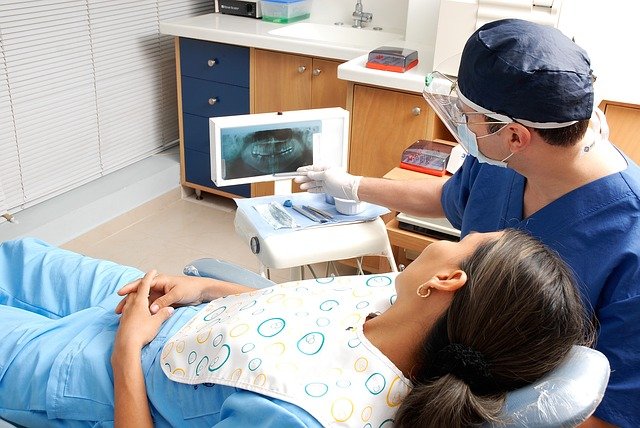For those who have a highly diseased tooth, root canal treatment is an effective way to save it. This common dental procedure removes infected pulp from the inside of the root of the affected tooth. The canal is cleaned, filled, and sealed to prevent infection or damage. The tooth is often restored after the root canal treatment so that it can return to full function and normal appearance. If Dr.Corcoran has recommended a root canal, you may have a few questions.
What is Dental Pulp?
Dental pulp is found in a tooth’s pulp chamber. Pulp is found just under the dentin layer beneath the enamel. The shape of a tooth’s pulp chamber determines the size of a tooth. Pulp is a soft substance composed of nerves, blood vessels, and connective tissue. The pulp extends out into the root canal of the tooth.
Why does pulp need to be removed?
There can be several reasons why the pulp of a tooth needs to be removed during root canal treatment. When the pulp becomes damaged, it can begin to decay and deteriorate. Over time, this can cause infection and other complications. To restore the tooth’s health, your Eagle, CO dentist will need to drill out and remove all the pulp in the tooth.
What Damages a Tooth’s Pulp in the First Place?
Pulp can become inflamed, irritated, or infected because of deep decay, large fillings, trauma to the face, a cracked or chipped tooth, or repeated dental procedures on the tooth. When the pulp becomes damaged, it can cause a lot of pain. If left untreated, it can worsen and affect the whole tooth or other surrounding teeth. Early root canal treatment can relieve pain, prevent further damage, and save the natural tooth.
What are the signs root canal therapy is needed?
Sometimes, the signs you need a root canal are obvious. You may suffer from a severe toothache, or notice a cavity. Other times, it takes the eye of an experienced dentist like Dr. Corcoran to determine that root canal treatment is needed. Dr. Paul Corcoran can often spot the sign of problems before it escalates. For most people, physical symptoms are not too bad until the problem becomes more advanced. Here are some of the signs that indicate you may need root canal therapy:
- Chipped or Cracked Tooth
- Persistent Toothache
- Long-term Sensitivity
- Dark or Discolored Tooth
- Swelling
- Bump on the Gum
The Root Canal Procedure
Root canal therapy can require more than one visit. Dr. Corcoran will remove the affected tissue or pulp from the tooth. Then, the inside of the tooth is cleaned. Once it is cleaned it will be filled with a dental composite and then sealed. If the tooth had a lot of decay, he may recommend a crown to strengthen it and prevent it from breaking.
Will a Root Canal Include the Use of Anesthesia?
Each individual has their own level of pain tolerance. For most root canals, a local anesthetic will be used to numb the area around the tooth being treated. The area should continue to be numb for several hours after the procedure. For patients who suffer from dental anxiety or phobia, other types of sedation dentistry may be offered. Minimal sedation to “take the edge off” may help some patients relax even though they will still be awake for the procedure. In some instances, an oral sedative is given prior to the procedure. Dr. Corcoran will gladly discuss your need for anesthetics.

Root Canal Recovery
The tooth may be a little sensitive for a few days after a root canal treatment, especially if it was infected before the dental procedure. Over-the-counter pain medications are usually enough to manage the discomfort. Most patients return to normal activities the day following treatment. You may notice the tooth feeling a bit different from your other teeth for a few days. Contact Dr. Corcoran if you experience any of these symptoms:
- Noticeable swelling inside the mouth
- Hives or itching, or other signs of an allergic reaction to medication
- Acute or severe pain
- The return of symptoms that you had before the root canal
Root Canal Outlook
Root canals have a huge success record and with proper dental hygiene, they should provide results that last your lifetime. D. rPaul Corcoran places a crown on a tooth following the root canal treatment that will provide extra strength and durability for the tooth.
Root Canal Complications
Most of the time, there are no complications from root canal treatment. However, in rare cases, it is possible that they can occur. Here are four rare but possible root canal complications:
- Infection. If bacteria enter the tooth during the procedure, an infection may occur. Antibiotics can be prescribed to treat the infection and in extremely rare cases, the tooth may need to be re-treated.
- Broken Teeth. If the crown is not placed in a timely manner following a root canal, there is a chance that the tooth could break.
- Fractured Root. In very rare cases, a root could have small pre-existing cracks that could cause a root to fracture during the procedure.
- Numbness. If the material was to move outside the placement area, it could cause numbness and inflammation. It’s also possible that the nerve could get bumped, punctured, or bruised during the procedure, although this is not likely.
Contact Us
If you have any tooth that is bothering you, it’s important to make an appointment right away. Don’t hesitate to contact our offices to schedule an exam. You can also use our online appointment request form. We will take care of you!

Recent Comments